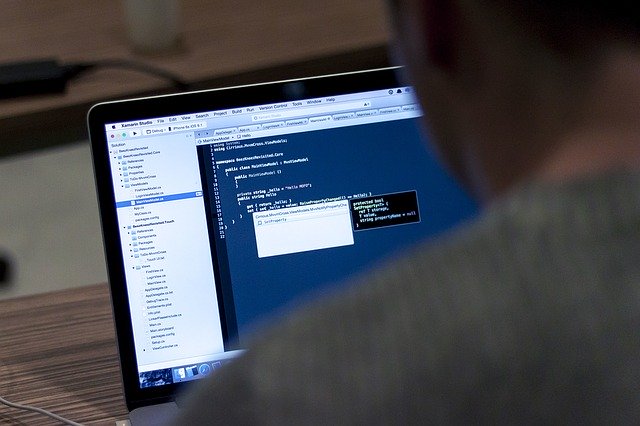Sign up for our daily EdTech news briefing today, free.
My first year at Powhatan Middle School I taught eighth grade Digital Media and Web Technologies, focusing on digital tools for business and web design. At that time, we had no dedicated computer programming course for students.
That fall I learned about CoderZ via an email and we participated in our first Cyber Robotics Coding Competition. Powhatan Middle School students earned an invitation for two teams to compete in the 2018 event in Washington DC. They had a great time and performed relatively well. More importantly, participation in that competition opened my eyes to the credibility and value of participating in the CRCC events.
That experience spurred a change to our course of action. Powhatan Middle School added Introduction to Game Design and Robotics to our curriculum and we purchased a subscription to the coding curriculum. We chose the program because we felt the fun factor balanced well with the educational value. The fact that students could work in class or at home, and that each student had his or her own coding interface with a virtual robot was a big deal. I also liked the available onboarding webinars and guidance, both of which made it easy to get started.
Four Ways to Maximize a Coding Platform
After implementing the coding platform, our students took home a first-place win in the 2019 competition for the South Atlantic Region. Today, we have 70 eighth-grade students learning in three coding classes.
Here’s how I get the most out of the program:
1. Go beyond just “hitting the targets.”
We had 15 students who made the CRCC 100 Club, which means they completed all of the missions in the competition and qualifiers rounds. That put us in the top spot in the South Atlantic Region and seventh nationwide. To get there, I taught from the point of view that it just wasn’t about completing missions for the sake of completing missions. I didn’t teach students to just hit their targets in the simulations, but to effectively and efficiently code their robots. I encouraged them to understand the sensors, the gyroscopes, and the code that makes effective programmers. It didn’t hurt that I had the current competition leaderboard running daily during our classes. My classes competed against each other as well as all the classes involved in the South Atlantic region.
2. Mix things up a bit.
We used the coding curriculum heavily in the fall and participated in the fall CRCC competitive events. We don’t participate in the spring competitions because my students are ready to apply their knowledge in different ways. To mix things up, we start programming physical robots, create 3D games using the programming language Lua in Roblox Design Studio, and begin coding in Python. I refer back to the coding curriculum regularly when we’re working with robots. I use the coding curriculum to demonstrate a function or sensor to the class and as a way to tie concepts together.
The coding curriculum supports the teaching of coding languages and robotics by teachers who don’t have coding backgrounds. The online, gamified, turnkey curriculum comes with class presentations, teacher guides, optional mission solutions, webinars, and blogs. All a teacher really needs to supply is their interest and enthusiasm.
3. Help them retain the knowledge.
Kids are fantastic at finding stuff online. If there is a place where they can copy, edit and play it, they will. Sometimes they remix and create some cool things.
The problem, very often they have no understanding of what they did or how. Very little learning took place and there is no knowledge to be retained and built upon. Many students want to just get things done, but learning programming isn’t about “just getting it done.” It’s about looking at how to make things better, easier, and more efficient. It’s about understanding the syntax and processes.
As a teacher, my goal is to start developing computational thinking and to cultivate transference of learning among programming languages. A benefit of CoderZ’s graphical simulations and gamified missions is that students cannot find the solutions online. This requires they be engaged as they learn coding principles and complete programming tasks with their virtual robots. Just going through the motions of learning is not an option.
4. Try to outsmart the developers.
I work every single coding mission before assigning them to the students. Then, I look at the optional solutions to evaluate my solution. Most of the time I am spot on, but sometimes I write a less efficient code and learn a better way. Occasionally, I find a more efficient way than what was shared in the teacher solution. That’s when I do my little happy dance, and say, “Ah-ha, I outmaneuvered the developers.” Yes, this self-proclaimed coding enthusiast has a competitive side.
This school year, two of my eighth-grade students took home $24,000 in scholarships for the Virginia Commonwealth University College of Engineering. When you think about the fact that you’ve got eighth-grade students that have already earned college scholarships, it’s pretty incredible.
The best part is that I don’t have to be a master of coding to help make that happen. I can just keep my classroom management philosophy in place and use the coding curriculum tools to help students achieve (and exceed) their individual goals.
Christa Fairman is a coding enthusiast, reflective teacher, and a Girls Who Code advisor at Powhatan County Public Schools in Virginia. She uses CoderZ as part of her coding curriculum. Her students participate in CoderZ’s CRCC events.
________________________________________________________________________________________________________________________________________________________________________________________
If you enjoyed this article, please sign up for our daily edtech news briefing. For more great content, subscribe to any of SmartBrief’s 275+ email newsletters.
